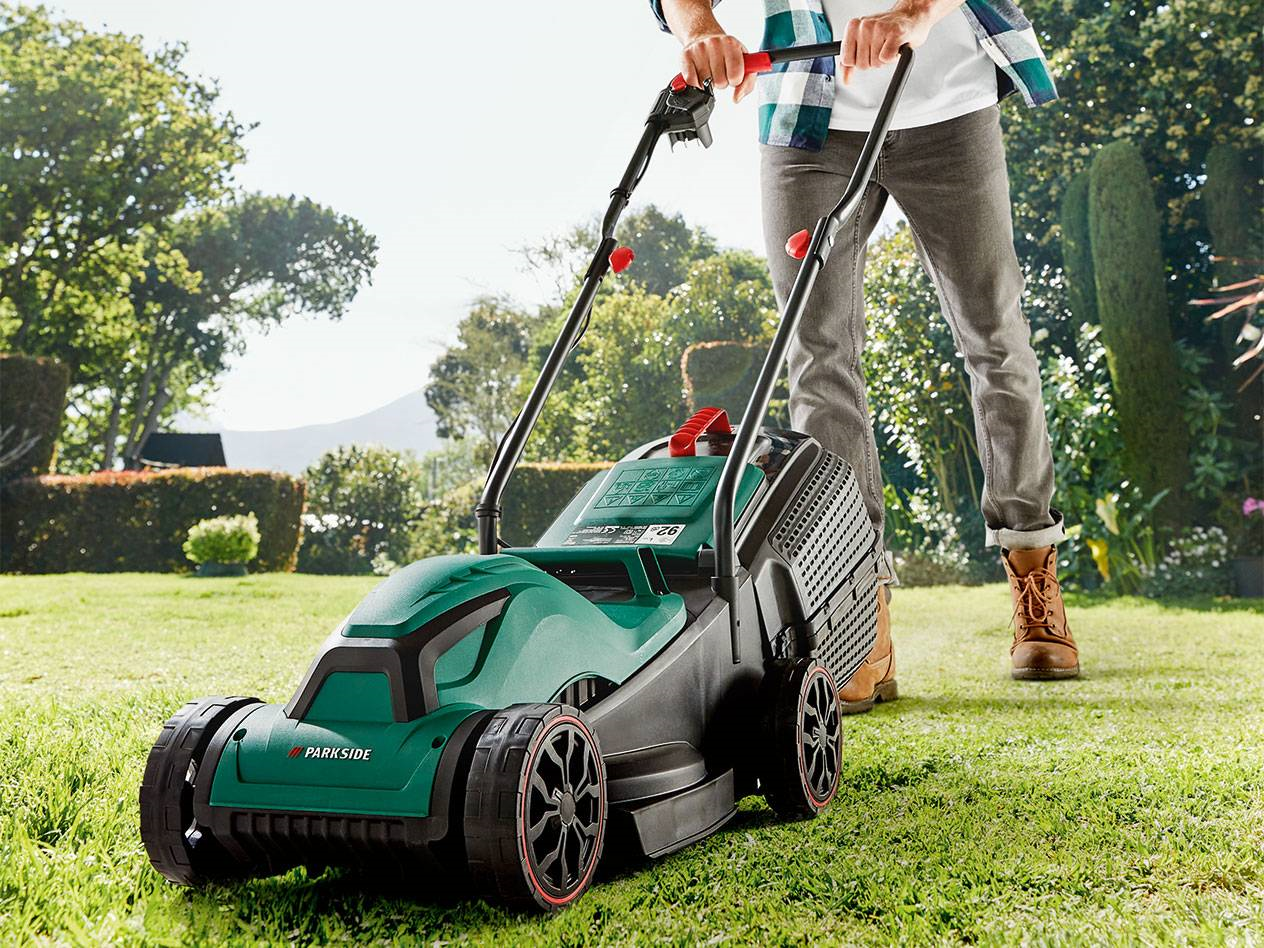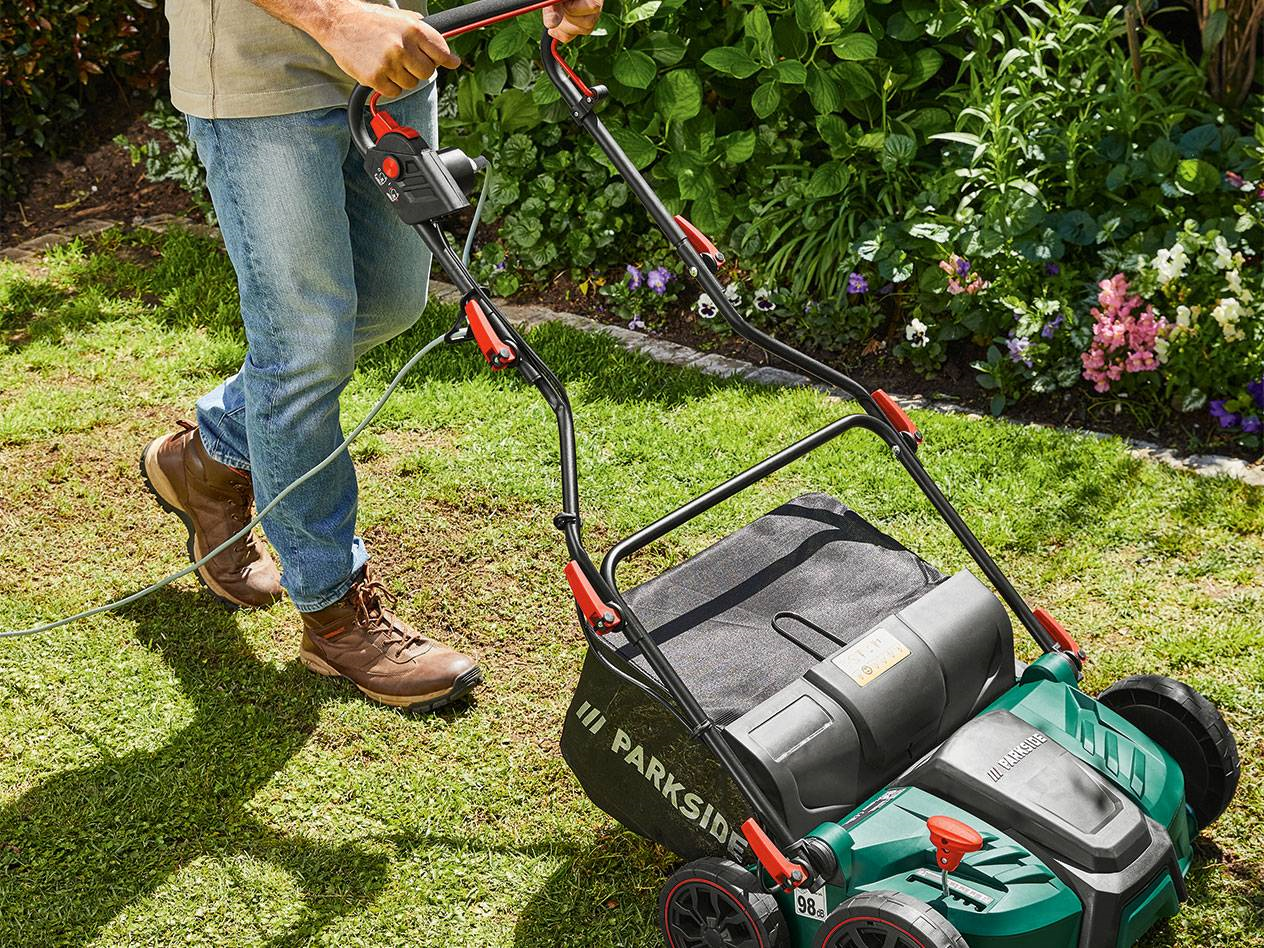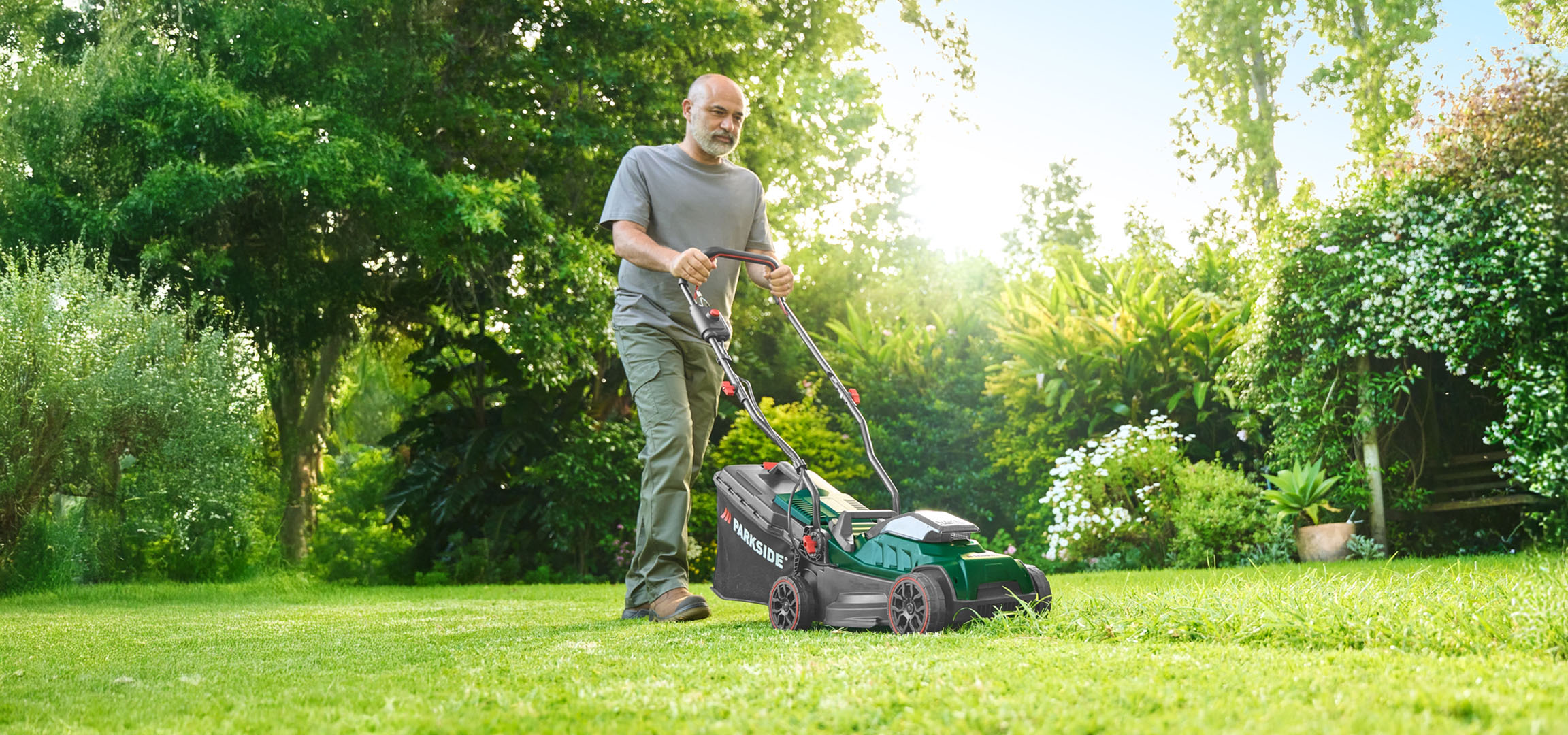Lawn Care: How to Keep Your Lawn Beautiful for a Long Time
For a healthy, beautiful lawn without weeds, proper care is essential. Mowing, watering, scarifying, aerating, liming, fertilizing, and reseeding: This guide shows when each measure is appropriate and provides tips for lawn care.
Contents
- Why is lawn care so important?
- What tasks are involved in lawn care?
- Lawn care calendar: What do I do when?
- Questions and answers
Why is lawn care so important?
Even though lawns have relatively few demands, they still need some care to stay green and healthy. Too much moisture is just as harmful as too little water, traces of beneficial animals like moles or voles destroy the overall appearance, and matted grass prevents enough light and air from reaching the green. Additionally, weeds and diseases spread much faster on neglected lawns. If you want to enjoy your lawn for a long time, you should perform a minimum amount of care.
What tasks are involved in lawn care?
In general, there are six main tasks in lawn care. Once the care routine is internalized, it becomes easy to manage. Even a large lawn area can be easily maintained with the right equipment without professional help from a gardener.
Mowing the Lawn

When thinking of lawns, mowing is the first thing that comes to mind. Regular mowing has several advantages:
- A mowed lawn always looks tidy – an important point for all garden owners who do not aim for a wild garden.
- Additionally, a mowed lawn is denser and more resilient, making it less susceptible to weeds and diseases. However, a radical short cut every few weeks is not recommended; rather, the lawn should be trimmed once or twice a week to a height of about 3 centimeters (ornamental lawn) or a maximum of 5 centimeters (utility lawn).
Wide Selection of Lawn Mowers
A lawn mower is the ideal tool for mowing flat areas. The selection ranges from simple hand lawn mowers to gasoline and electric lawn mowers, and even lawn tractors for large areas. Robotic mowers are also increasingly available in stores. Narrow edges and corners can be shaped with a grass trimmer. With the right equipment and proper mowing tips, the lawn will be beautiful again in no time.
Watering the Lawn
Like any other plant, lawns need a certain amount of water to survive. Especially in summer, it is necessary to water the lawn regularly. The right amount is crucial. A newly laid lawn needs a lot of water, especially in the beginning, so that the roots can establish well. Here, watering can be done throughout the day without any problems.
Lawns that have been growing in the garden for a longer time should be watered thoroughly once a week. The roots of the lawn reach up to ten centimeters below the ground. Enough water must be provided so that the moisture can penetrate to this depth. On average, 20 to 30 minutes of watering is sufficient – ideally after sunset, so that the water does not evaporate immediately but can seep into the soil.
For smaller areas, a garden hose with a spray head can be used for watering. Those who do not want to water with a hose or have a larger lawn area to maintain can also use mobile or permanently installed sprinklers. Some models can be controlled with a watering computer, allowing for fully automatic watering.
Scarifying and Aerating the Lawn

During the cold seasons, it is unavoidable that grass blades become matted or die. Moss also tends to form when it is particularly damp and unpleasant outside. Additionally, leaf remnants and other organic residues hinder the lawn from breathing. Mold can easily develop in these areas. Therefore, it is important to clear the lawn of dead remnants from the winter in the spring.
Scarifying involves essentially combing the lawn: removing thatch, weeds, and plant residues. Every lawn should be scarified both crosswise and lengthwise at the start of the gardening season each year. If necessary, scarifying can be repeated in the fall to remove plant and mowing residues from the summer. Throughout the year, it is advisable to aerate the lawn. Unlike scarifying, where the blade penetrates a few millimeters into the soil, aerating involves drilling holes into the ground. This process ensures that the soil is supplied with oxygen. Aerating should ideally be done once a year. After this step, the lawn is ready for fertilizing.
Liming the Lawn
Sometimes a lawn has a special need for lime. A pH test for the soil provides information about the exact composition of the soil. However, a look at the lawn itself can already reveal a lot: if a lot of moss grows on the lawn, it is a sign that the soil contains too little lime. To distribute the lime evenly on the lawn, a spreader is used. Once limed, a repeat is only necessary after two to three years. After liming, you should wait three to four weeks before fertilizing the lawn.
Reseeding the Lawn
Bare spots in the lawn are not particularly attractive. The best time for reseeding is in the spring after scarifying. This prevents weeds from settling in the bare spots. If necessary, reseeding can be repeated in the fall. Small areas can be planted by hand, while for larger patches, the use of a spreader is advisable to distribute the seeds evenly. When sowing, make sure to spread the seeds both lengthwise and crosswise. Using a rake or by watering with a sprinkler, the seeds are worked into the soil. The areas must be kept moist for the next four weeks to allow the seeds to germinate. The new lawn can be mowed when it reaches 10 centimeters in length.
Lawn Care Calendar: What to Do When?
Not every lawn care task is necessary or sensible at all times of the year. This table provides an overview.
Frühling | Sommer | Herbst | Winter |
|
|---|---|---|---|---|
Mähen | Ja | Ja | Nein | Nein |
Wässern | Nein | Ja | Nein | Nein |
Vertikutieren | Ja | Nein | Ja | Nein |
Lüften | Ja | Nein | Nein | Nein |
Kalken | Ja | Nein | Ja | Nein |
Düngen | Ja | Ja | Nein | Nein |
Nachsäen | Ja | Nein | Ja | Nein |
Questions and Answers
Moles are protected by nature conservation laws. They must not be caught, injured, or killed. To drive them away, there are numerous methods. Particularly promising are approaches that affect the mole's sense of smell or hearing. For example, it can help to spread buttermilk, garlic water, or mothballs in the soil. But even the sound of a wind chime can often help.
The same care rules apply to sod as to seeded lawns. Regular mowing, aerating, watering, and fertilizing also help keep the lawn looking good for a long time. Bare spots in the sod can be repaired either by reseeding or by laying special small sod patches.
Depending on how severely the lawn has been damaged by the drought, different measures need to be taken. If there are only brown spots, it is sufficient to water the lawn adequately so that it can recover. For larger areas, reseeding is necessary. If the entire lawn and even the root system are dried out or even burned, only a complete lawn renewal will help.

